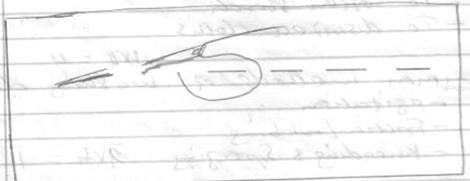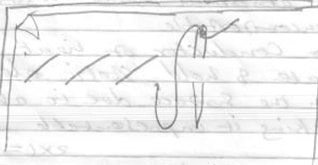SECTION A
- Give the two major types of household refuse. (2 marks)
- Organic matter – this is decomposable waste matter derived from living things e.g. food remains, grass etc.
- Inorganic waste – this is non-decomposable waste matter derived from non-living things e.g. plastics, glass etc.
- Give reasons why refuse should be disposed off appropriately. (2 marks)
- To avoid bad odor
- To keep away flies
- To make the environment clean
- To discourage breeding of rodents which cause disease
- To prevent accidents caused by broken glass, thorns, slippery areas, pools of stagnant water etc.
- Define the term drainage. (2 marks)
- Drainage is a system of getting rid of waste water away from a house or a building
-
- Discuss four disadvantages of free drainage system. (4 marks)
- It makes the surrounding swampy
- It makes the environment have a bad smell
- Dirty water attracts flies
- It causes soil erosion
- It makes the environment unsightly
- It causes slippery environment which may cause accidents such as falls
- State four causes of poor sanitation. (4 marks)
- Poor personal hygiene
- Water pollution due to domestic and industrial sewage leaking into the water supply
- Improper refuse disposal that litters the environment
- Congestion – that is overpopulation that causes pressure on public facilities such as the sewage system
- Air pollution from industries, dust and aero-sprays
- Discuss four disadvantages of free drainage system. (4 marks)
- Name four classes of laundry equipment. (2 marks)
- Washing equipment
- Drying equipment
- Finishing equipment
- Storage equipment
- State the points to consider when choosing shoes. (4 marks)
- The shoe should be well made
- They should be attractive
- They should be comfortable to wear
- They should be affordable
- They should be easy to maintain
- They should be appropriate for the occasion
- What is a house? (1 mark)
- A house is a physical structure that provides shelter for the family and their possession
- Describe the following methods of dirt removal.
- scrubbing (2 marks)
- it is done on a hard surface by use of a scrubbing brush and warm soapy water. The surface is then rinsed and dried using a cloth. Finally, the surface is buffed with a dry cloth
- wiping (2 marks)
- done on a delicate surface by use of a mop or sponge wrung from warm soapy water. The surface is rinsed with a cloth wrung out of warm clean water. It is then buffed to shine with a dry mop
- scrubbing (2 marks)
- State three desirable qualities of a good clothes line. (3 marks)
- It should not rust to avoid staining clothes
- It should be strong to hold the weight of damp/wet clothes
- It should be made of durable material such as nylon or metal wire
- It should be smooth to avoid tearing clothes
- It should be firm to avoid stretching
- It should resist weather conditions
- Name four types of soap found in the Kenyan market. (2 marks)
- Bar soap
- Soap jelly/liquid soap
- Soap powder
- Soap flakes
- Antiseptic soaps
- Toilet soaps/bathing soaps
- Differentiate between regenerated fibres and synthetic fibres. (2 marks)
- Regenerated fibers are made from natural material which are chemically beaded while synthetic fibers are made from petroleum products and natural gas
- Highlight two laundry processes that are harmful be wollen fibres. (2 marks)
- Soaking causes wool to shrink
- Rubbing method cause felting and stretching of wool
- Wringing causes stretching and felting of wool
- State three ways of minimizing wastage of detergents when washing. (3marks)
- Use just enough detergent
- Avoid leaving bar soap in water
- Use sufficient amount of water/ do not use to much water
- Plan to wash many articles using the same water starting with les dirty articles
- Use soft water which lathers easily
- Use warm/hot water
SECTION B
- You are intending to host a birthday party for your younger brother.
- Give the procedure on how you would thoroughly clean a cemented floor of the room you will use. (8 marks)
- Collect all cleaning materials and equipment
- Move the movable furniture to one side
- Sweep the room from the farthest corner towards the door
- Collect rubbish and dispose appropriately
- Using warm soapy water and a scrubbing brush scrub small portions t a time in circular motion
- Rinse thoroughly with a floor cloth wrung out of clean water
- Repeat scrubbing, rinsing and overdamping sections till the whole floor is clean
- Dry using an absorbent cloth/mop
- Clean the equipment used and store
- Describe the procedure you would follow to launder silk blouse/short you intend to wear. (11½ marks)
- Collect all the equipment and materials needed
- Shake to remove loose dirt
- Wash by kneading and squeezing in warm soapy water
- Rinse thoroughly in warm water
- Finally rinse in cold water where vinegar has been added to give lustrous finish
- Squeeze out excess water/roll on a dry towel
- Dry under shade on a clothes line
- Press using warm iron on the ins
- Air to freshen
- Fold and store
- Clean equipment used
- Give the procedure on how you would thoroughly clean a cemented floor of the room you will use. (8 marks)
SECTION C
-
- Why do we use bleaches in laundry. (3 marks)
- To whiten white cotton and linen fabrics
- To kill germs
- To remove strong stains
- State other ways of bleaching clothes a part from using chemical bleaches. (2 marks)
- Drying/spreading wet clothes outdoors oxygen in the air bleaches the clothes in sunlight
- Boiling clothes remove stains and whiten them
- State the differences between wear and tear. (6 marks)
- Wear – this refers to the weathering of fabric due to rubbing or friction caused during use that result to thinning and eventual tear
- Tear – this is a hole or a cut found on a garment which occurs due to presence exerted on it or from a sharp object
- Name four common methods of repairing clothes and household articles. (4 marks)
- Donning
- Patching
- Reducing gaping seams
- Repairing belt loops and carriers
- Replacing zips and buttons
- Repairing hanging items
- Why do we use bleaches in laundry. (3 marks)
-
- Briefly describe the two major classes of stitches. (4 marks)
- Temporary stitches
- Done to hold work temporary before making permanent stitches. They are also used for transferring pattern markings
- Permanent stitches
- They are used to hold work permanently and are not removed
- Temporary stitches
- By use of well labeled diagrams describe the working of the following stitches.
- Even tacking. (4 marks)
- Work from right to left using a single thread and a long needle
- Start with a knot and tack evenly along one stitching line
- Leave a thread hanging at the end

- Basting stitches/diagonal tacking. (4 marks)
- they are worked from left to right
- Used to hold collars pleats items etc.
- Fasten the beginning with a knot
- Make diagonal stitches to hold layers of fabric before permanent stitches are washed

- Even tacking. (4 marks)
- Identify four limitations of using cotton fabrics. (4 marks)
- They have low resilience hence creases badly
- They shrink readily if not pre shrunk
- They lack lusture hence have a dull appearance
- Burn readily when exposed to flames
- They are not dirt resistant
- Strong acids weaken cotton
- White cottons yellow with age
- Develop mild stains when kept damp
- Weakened by long exposure to sunlight
- Give two reasons why nylon fibre is not a popular material for making lingeries. (2 marks)
- It is not absorbent hence make the wearer uncomfortable
- It is poor conductor of heat
- It generate and held static electricity
- It piles on the surface due to abrasion hence making it unpresentable
- State two qualities of a good tape measure. (2 marks)
- It should be firmly woven
- It should have a plastic coating
- It should be clearly marked on both sides in inches and centimeters
- It should have metal caps at the ends to prevent fraying.
- Briefly describe the two major classes of stitches. (4 marks)
Join our whatsapp group for latest updates
Tap Here to Download for 50/-
Get on WhatsApp for 50/-
Download HOME SCIENCE Marking Scheme - Form 2 End of Term 1 2019 Examinations.
Tap Here to Download for 50/-
Get on WhatsApp for 50/-
Why download?
- ✔ To read offline at any time.
- ✔ To Print at your convenience
- ✔ Share Easily with Friends / Students

